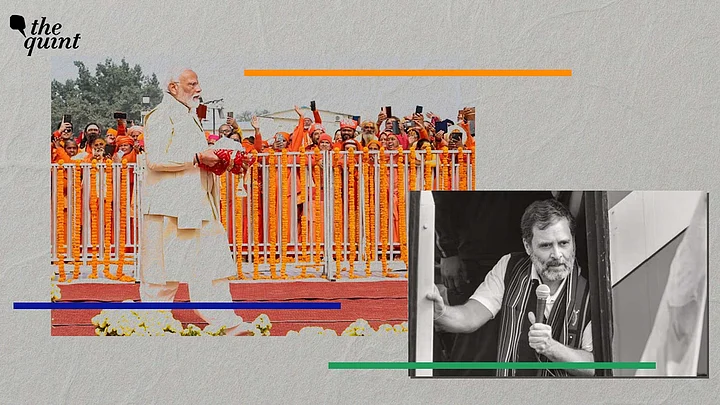Whether it is the consecration of the Ram Mandir in Ayodhya by Prime Minister Narendra Modi or the Bharat Jodo Nyay Yatra spearheaded by Rahul Gandhi and the Congress party, the electoral and political importance of both, albeit strikingly different in their respective optics and propriety, has a strong electoral pitch for the voters of key swing states.
A potent mix of religious majoritarianism and welfarism has worked well for the BJP in states like UP (that are electorally more important in national elections). On the other hand, the Congress’s Yatra 2.0 plan consists of 15 states, 110 districts, and 100 Lok Sabha seats.
Back in the 2019 Lok Sabha polls, the Congress party had first spoken of bringing nyay as a cash-transfer welfare scheme for the poor which unfortunately failed to find any resonance amongst the voters.
The hope this time is to revive the realisation of nyay in a broader form, focusing on another key aspect of the Constitution's Preamble — arthik nyay, samajik nyay, and rajnitik nyay (economic, social, and political justice).
This author had previously argued that the electoral significance of the first Bharat Jodo Yatra was quite limited, contrary to what Congress party members might say.
At this point, two issues stand out at the national level: rising income and access inequality, and the rising gap between output-employment creation for millions of aspiring workers across the country.
See this chart below for reference:
If we look at income growth and income groups from years 2016-2021 in India, then the richest 20 per cent have seen almost a 40 per cent rise in income growth, while the middle 20 per cent, the lower middle 20 per cent, and the poorest 20 per cent have all seen a negative income growth.
From an access and equality standpoint, as studied and explained by our Centre for New Economics Studies (CNES), based on how states can be measured in terms of ensuring access to basic social, and economic public goods (education, healthcare, social security, legal recourse, finance), the situation for most Indians couldn’t be much worse. This, combined with a rising inflationary tax guided by corporate greed and instances of price gouging is eroding the standard of living for the poor and the low-income class as a whole.
Looking at the output-employment growth over the last six to seven years, particularly from the post (2016) demonetisation period, there has been a sharp fall in overall output (if we only look at industrial production levels) and in the aggregate employment rate of the eligible job-seeking population.
The gendered effects of these trends are even more striking, where the female employment rate has dropped from 11.88 per cent (2016-17) to 7.96 per cent (2021-22). In urban areas, for women, the employment rate has dropped from 10.77 per cent to 5.57 per cent in the same period.
When anyone looks at these three charts with other cumulative sets of data points, it is difficult to ascertain how a party like the BJP, which has actually done very little for the middle class (in terms of creating new jobs and income mobility opportunities) and whose policies have made the poor more vulnerable, has continued to remain electorally popular while garnering votes from the very states (Uttar Pradesh, Madhya Pradesh, Rajasthan, Chhattisgarh etc.) where these data trends appear to be most stark (as compared to 2014).
The Congress, as the principle political opposition, despite being aware of this, has done very little to capture the imagination of the electorate on the issues of jobs, inequality, price rise etc., while suffering from a crisis of a visionary leadership and organisational incompetence.
No Bharat Yatra, unless secured and guided by a people’s movement, and anchored by a leader whose voice and presence closely resonates with the anguish of those on the ground, can cause any difference to the way the people will vote in 2024. The INDIA (Indian National Developmental Inclusive Alliance) alliance members who have successfully competed against the Bharatiya Janata Party, from Kejriwal to Mamata, are aware of this.
What is perhaps needed by a broken political opposition is a cohesive vision, backed by an even more inspiring leadership, that brings forth a powerful counter-punch to the BJP, built on a credible, long term theory of driving socio-economic change.
(Deepanshu Mohan is a Professor of Economics and Director, the Centre for New Economics Studies (CNES), Jindal School of Liberal Arts and Humanities, O.P Jindal Global University. This is an opinion piece and the views expressed above are the author’s own. The Quint neither endorses nor is responsible for them.)
